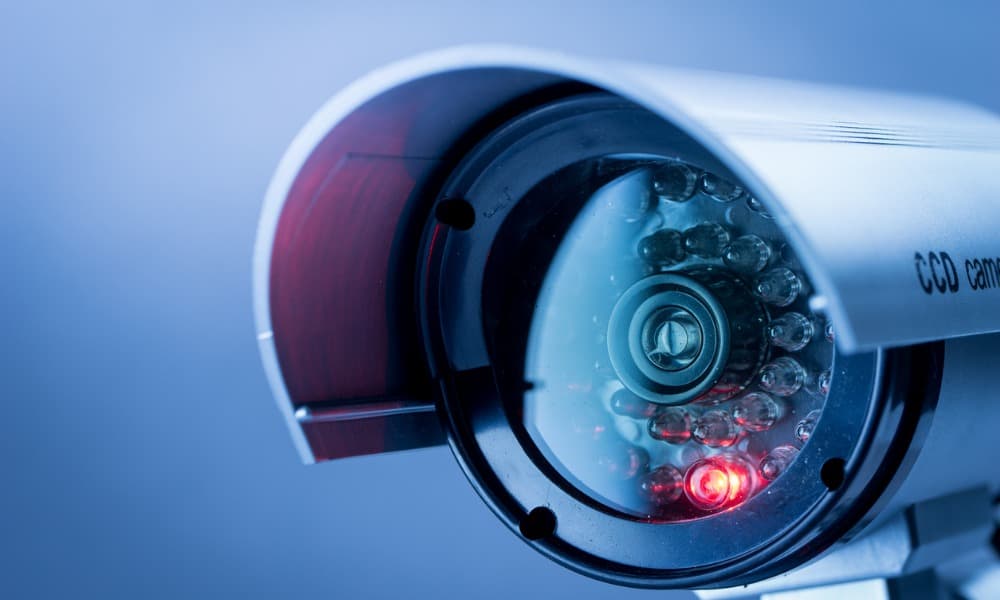You must choose the best option when purchasing a security camera for your business. But the process is even more confusing with so many possibilities on the market. So, here is a guide to help you decide on the best security cameras for your business and the features to consider.
Key takeaways- Security cameras are a basic necessity for any modern business
- The quality and effectiveness of your security cameras come down to their features
- Features of the best security cameras include two-way audio, high resolution (at least 1080p), wide viewing angles, multiple storage options, motion detection, and night vision.
Types of security cameras
Various types of security cameras are available in the market, each suited to specific applications. Some of the most common types of security cameras for businesses include:1. Bullet cameras
Bullet cameras get their name from their distinct long, cylindrical shape. This unique design gives them unparalleled long-distance monitoring capabilities. It also enables them to focus on a specific field, which provides them with better clarity. The distinct shape makes them easily recognizable, making them an excellent deterrent. Unfortunately, their easily-recognizable design makes them hard to conceal, so you may want to install them slightly higher up to prevent vandalism.Pros
- Easy installation
- High-resolution image capture
- Versatile mounting options
- Weatherproof and durable construction
Ideal uses
The high-resolution and focus capabilities make bullet cameras suitable for various business applications. This includes internal and external business premises monitoring at entry and exit points and employee and customer behavior within the store.2. Dome cameras
Like bullet cameras, dome cameras get their name from their unique dome shape. Their minimalistic design makes them slightly more discreet than most cameras. That doesn't mean that people accessing your business won't see them—they just won't know which direction they're pointing at. This creates uncertainty among would-be wrongdoers. Most dome cameras feature motion-sensing capabilities that adjust their focus based on movements. This, coupled with the fact that they can be installed on walls and ceilings, gives them 360-degree monitoring capabilities.Pros
- Relatively discreet surveillance
- 360-degree monitoring
- Wide-angle view capability
- Versatile mounting options
Ideal uses
With wide-angle view capabilities and the fact that you can install them on any flat surface in your business makes them ideal for indoor surveillance. Most dome cameras also have weatherproof designs, making them suitable for outdoor applications.3. PTZ Cameras
PTZ (pan, tilt, and zoom cameras) are some of the best security cameras to use without Wi-Fi. They mainly come in wired configurations, so you won’t require additional wireless connection devices. Their unique design gives you complete control over the surveillance area. They can move on a vertical and horizontal axis, making them suitable for wide-area monitoring. PTZ cameras can zoom in and out, offering better clarity and focus.Pros
- Pan, Tilt, and Zoom capabilities
- Impeccable image resolution
- Remote control and monitoring
- Full control over the surveillance area
Ideal uses
Their high-image resolution and “PTZ” capabilities make them especially suitable for applications in large retail environments like supermarkets and museums. Most PTZ cameras also have weather-resistant designs that enable them to be used in outdoor spaces like parking lots and entry and exit points.4. IP Cameras
IP cameras take a slightly different approach to surveillance monitoring. Unlike most cameras, they actively transmit real-time surveillance footage over the internet, providing even better remote monitoring power. Some IP cameras are also entirely wire-free. You'll have to change their batteries occasionally, but on the upside, you get to install them virtually anywhere you want. For instance, you can install them in your business and have the live footage transmitted to a device in your home. These cameras typically transmit the footage to a network video recorder (NVR) or secure cloud network where it can be recorded and readily accessed through any internet-connected device. On the downside, some cameras offer low-quality footage due to compressed bandwidths.Pros
- Remote monitoring capabilities
- Wireless installation
- Can stream footage to multiple devices
